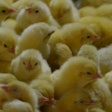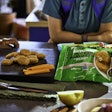Quality vs quantity. It’s an old debate, and which is the more important very much depends on your circumstances.
If you’re short of food, then you really start to think about volumes. I recently watched a documentary on survivors of child labour camps that included an interview with a man who, as a starving child, had found a pea. He cut it up into pieces to make it last as long as possible. No matter that it was old and dry, his plight was such that even this morsel was of extremely high value.
Of course, when there is plenty, a found pea is unlikely to be treated with such reverence, even if it remains nutritious. Circumstances, although not entirely, greatly dictate the food that we will accept and want.
Research from the UK has shown that consumers are buying more Freedom Food – the RSPCA farm assurance scheme - indoor chicken than ever before, while lower welfare standard chicken is suffering a downturn.
The research – carried out by Kantar Worldpanel for RSPCA Freedom Food – revealed growth and spend on Freedom Food indoor reared chicken is far outstripping standard with a GBP55.2 million increase in consumer spending on Freedom Food-labelled chicken, from GBP16.4 million to GBP71.6 million over the 12 months to March this year.
The growth in the amount of Freedom Food chicken sold in supermarkets has also overtaken standard, up by more than 15 million kilos, compared to a decrease of 11 million for standard.
Leigh Grant, Freedom Food’s chief executive, commented that the figures were absolute proof that chicken welfare was of paramount importance to more people than ever before, and the fact that shoppers stood firm by animal welfare through some of the most difficult economic times only reinforced that it was an issue that was here to stay.
Of course, welfare is a matter of interpretation, but the labelling used by Freedom Food, would appear to resonate with a growing number of UK consumers. It conveys a message that a certain group of consumers wants to hear, and helps them in making a purchasing decision.
Consumer perception is important for a variety of reasons and was touched on by Anthony Kleanthous at this year’s British Pig Executive (BPEX) Market Outlook event.
In examining the impact of pig production on the environment, he touched on whether rising living standards in developing countries have to result in greater meat consumption, asking whether consumption goes up because, once consumers in developing markets attain a certain income they want to mimic the consumption habits of developed markets, or whether they consume more meat because it has become relatively cheaper, and so is no longer regarded a luxury.
As meat production and consumption increase, there are questions that arise in relationship to sustainability, and the various approaches that can be taken to reduce their impact. One area being put forward to reduce these impacts is to eat less meat.
But is this a desirable or even viable option? Looking at the role of retailers, Mr Kleanthous suggested that they could play a key role in reducing portion sizes and taking meat up market. Not only could they make foods with a low meat content irresistible, but could also contribute in growing consumers’ perceptions of how special meat is. As perceptions change, consumers may be willing to eat less meat, particularly if they see it as having more value.
But is there not a risk for any producer venturing into birds that are more expensive to produce, and consequently more expensive to sell to retailers, of losing out when the market, and retailers, turn to lower cost goods?
Perhaps not. The UK experience would suggest that consumers are prepared to pay more for a product that they perceive to be of a higher value.
Based on some Food and Agriculture data, some estimates suggest that food production will have to double over the next 50 years, and of course, these arguments only come into play in those parts of the world where income levels are sufficiently high and food supplies sufficiently plentiful, but over time, they may become increasingly relevant.
Producers will have some interesting options to consider, the production of less but higher margin products, or more product, but with lower margins.






